Honduras Bisected and Quartered Stamps
Because of both internal and foreign powers, Honduras has never had a prosperous nor sizeable middle class. Income and asset disparities remain extreme and economic poverty has been the plight of the majority from its founding through the present day. The consequent instability is written in a history of violent revolutions or stability under ruthless dictatorships nurtured by the privileged elites.
The country's postal history parallels this instability. In many cases stamps were simply unavailable for a variety of reasons. Even though the government expressly forbid cutting up stamps the situation left no alternative in many situations and at various times. No lower denomination stamps were available!
Stamps were plentiful and available all through the Seebeck issues. Because of internal warfare, lack of funds and sacking of post offices, serious shortages started about the time of the release of the Medina issue in January, 1907. A minor supply of low denomination stamps was temporarily provided in 1909 by locally lithographing a Medina 1 centavo clone and in 1910 surcharging 20 centavos Medinas with 1, 5 or 10 centavos rates. But the continuing shortage of low denomination postage stamps resulted in the need to cut up larger denomination stamps to mail letters. Bisects during the Medina issue sharply peaked in the final year of their usage...1910.
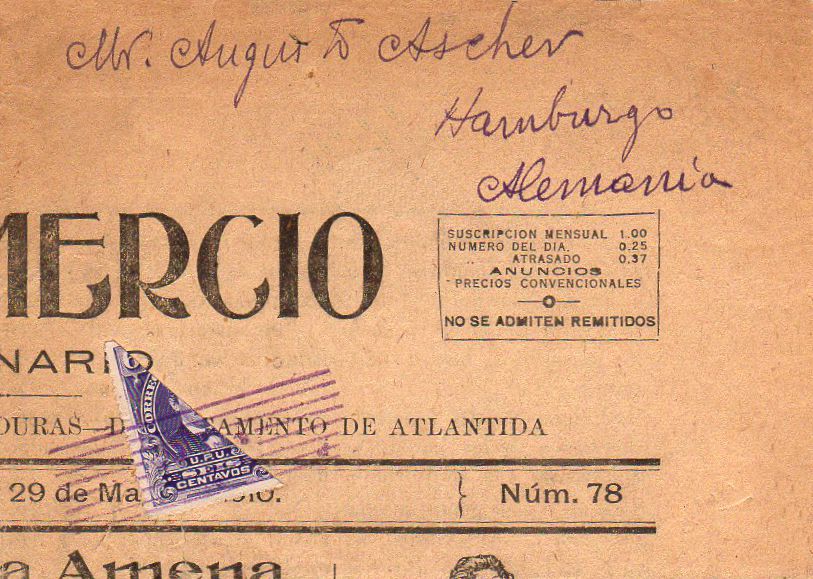 Pictured is a La Ceiba newspaper posted to Hamburg, Germany in 1910. The bisected 6c Medina yields the correct 3c postage rate for newspapers to Europe. The BH81A cancel was very common.
Pictured is a La Ceiba newspaper posted to Hamburg, Germany in 1910. The bisected 6c Medina yields the correct 3c postage rate for newspapers to Europe. The BH81A cancel was very common.
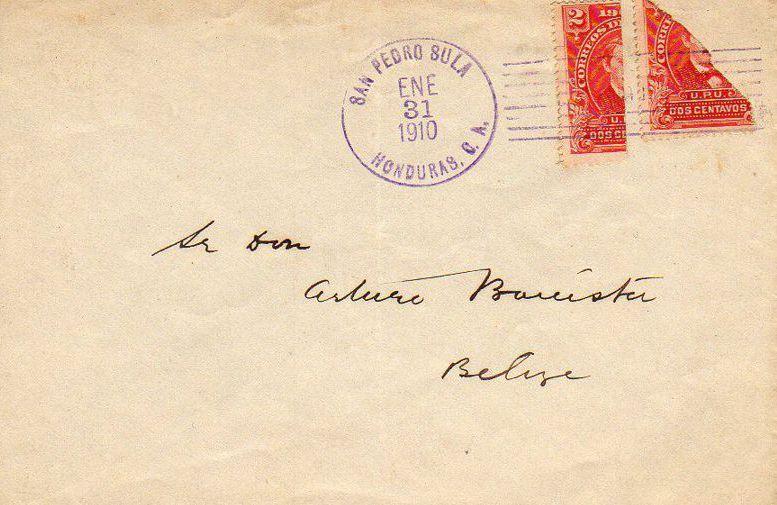 This is an interesting cover with BH81A cancel and L postal marking. It illustrates the two accepted ways to bisect. It looks like all 1 centavo stamps had been sold and every 2 centavo stamp had been bisected at the San Pedro post office!
This is an interesting cover with BH81A cancel and L postal marking. It illustrates the two accepted ways to bisect. It looks like all 1 centavo stamps had been sold and every 2 centavo stamp had been bisected at the San Pedro post office!
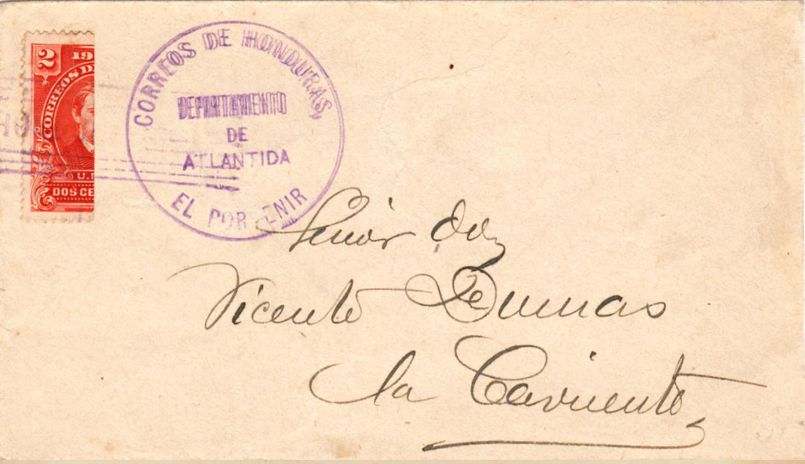 This cover is most unusual. Not only is it local usage posted in El Porvenir as a bisect, but it carries an usual BH90 cancel and CORD departmental postal marking. This cancel was used in El Porvenir and only a few other towns within the country.
This cover is most unusual. Not only is it local usage posted in El Porvenir as a bisect, but it carries an usual BH90 cancel and CORD departmental postal marking. This cancel was used in El Porvenir and only a few other towns within the country.
The introduction of the Honduran Scene issue in January, 1911 helped the problem a bit but the shortage soon reappeared. A more severe shortage of the 5 centavos stamps led to more bisects and a surcharge of surplus 1 centavo Honduras Scene stamps.
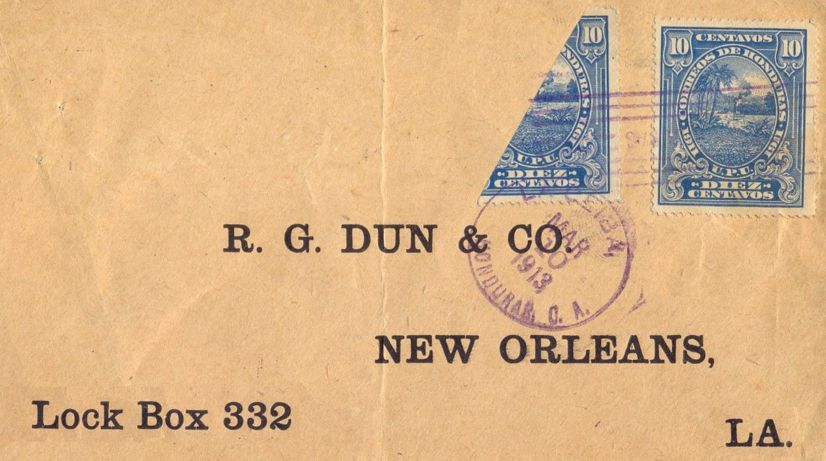
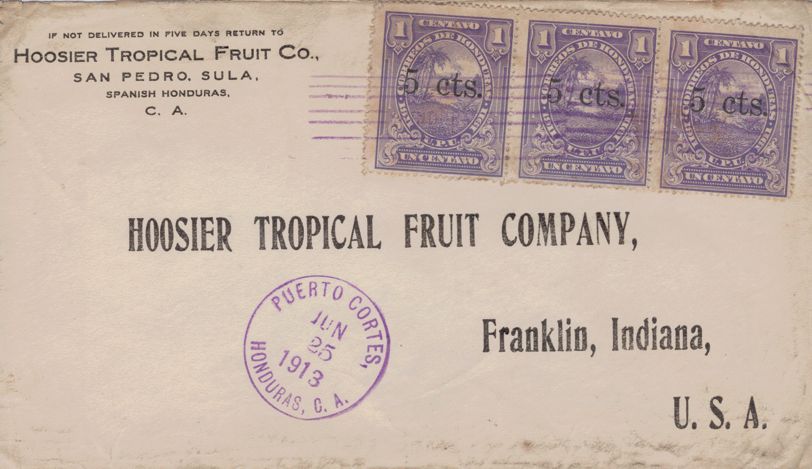
The use of bisects was relieved after the release of the Bonilla Sierra series in 1913, but showed up again with the sea of surcharges released in 1914 followed by another flood of bisects in 1915. Another shortage followed the release of the Bridge and Theater issue in 1915.
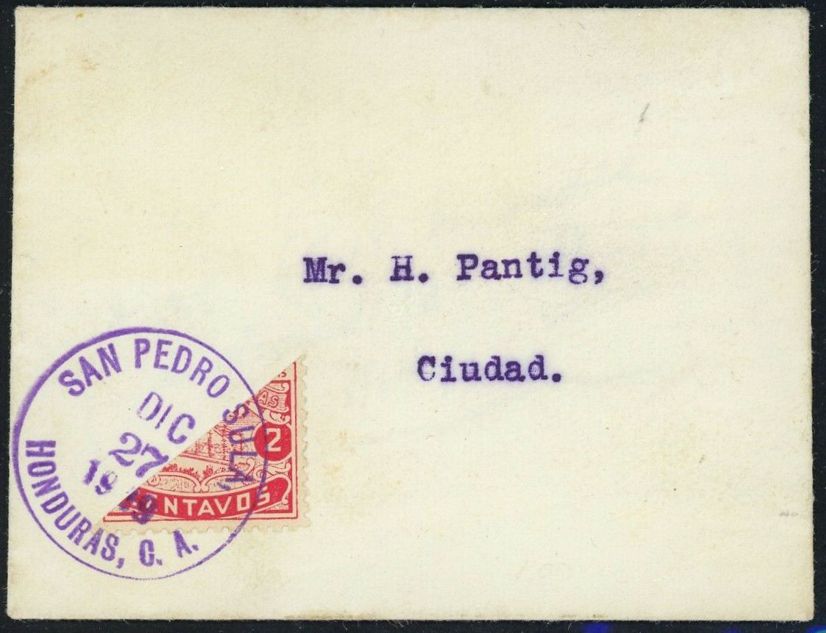 This cover was a local usage New Year's greeting card in San Pedro Sula in 1919 after the theater and bridge set was demonitized. It bears an L postal marking, the most common postal marking throughout the country during the first quarter of the twentieth century.
This cover was a local usage New Year's greeting card in San Pedro Sula in 1919 after the theater and bridge set was demonitized. It bears an L postal marking, the most common postal marking throughout the country during the first quarter of the twentieth century.
Shortages of the Morazán issue started showing up in 1922. Again a flood of surcharges followed...the famous 1922-3 Provisionals.
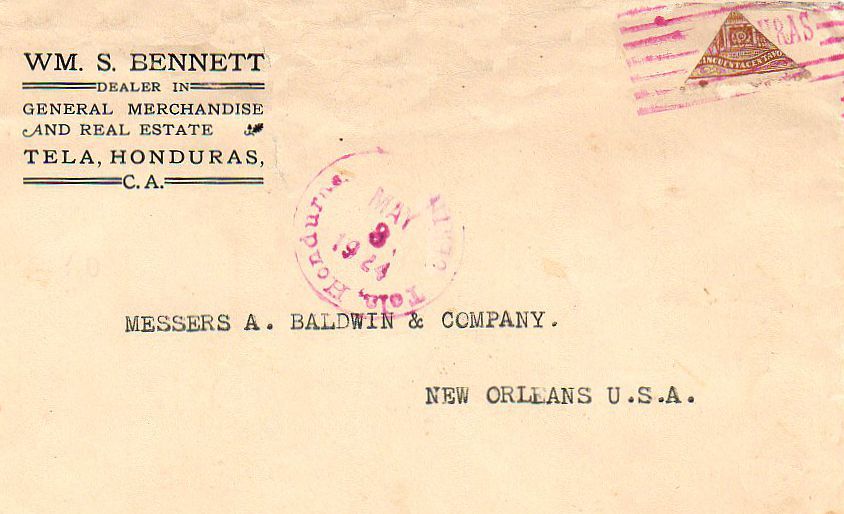 This unusual cover was mailed from Tela in May, 1924 long after the 1919 Morazan statue stamp was demonitized. The BH72 cancel was popular starting at this time, The postal marking is an R type registrationo. The Morazán stamp is quartered 50c yielding 12.5c to cover the 12c postage.
This unusual cover was mailed from Tela in May, 1924 long after the 1919 Morazan statue stamp was demonitized. The BH72 cancel was popular starting at this time, The postal marking is an R type registrationo. The Morazán stamp is quartered 50c yielding 12.5c to cover the 12c postage.
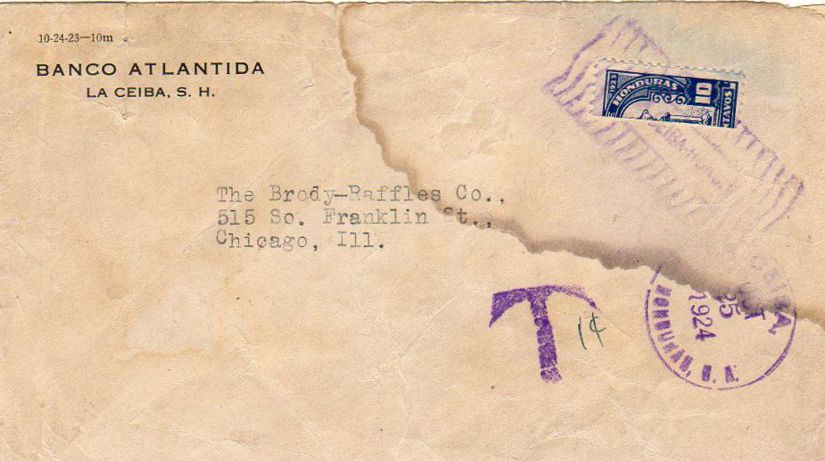 The Herrera issue followed in June of 1924. This is a 1924 Herrera issue vertically bisected and bearing the ubiquitous L postal marking along with the BI cancel. It is unique to La Ceiba and used for about four years in the mid 1920's. The 5c postage required to North America is short by 1c as indicated by the T and 1c.
The Herrera issue followed in June of 1924. This is a 1924 Herrera issue vertically bisected and bearing the ubiquitous L postal marking along with the BI cancel. It is unique to La Ceiba and used for about four years in the mid 1920's. The 5c postage required to North America is short by 1c as indicated by the T and 1c.
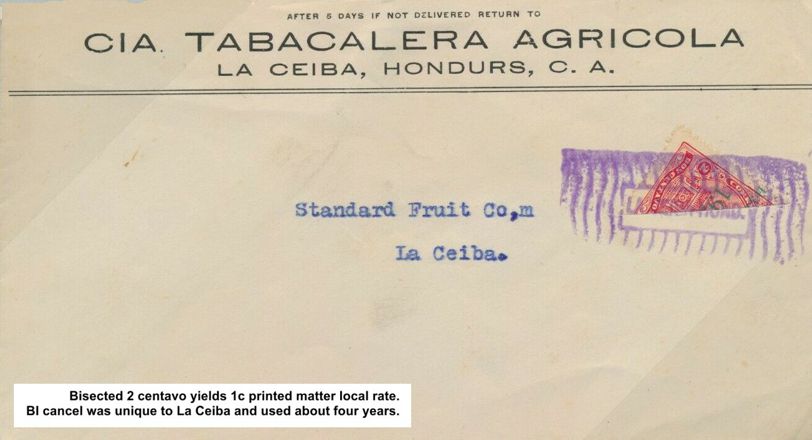 An unusual bisect of the 1926 surcharge.
An unusual bisect of the 1926 surcharge.
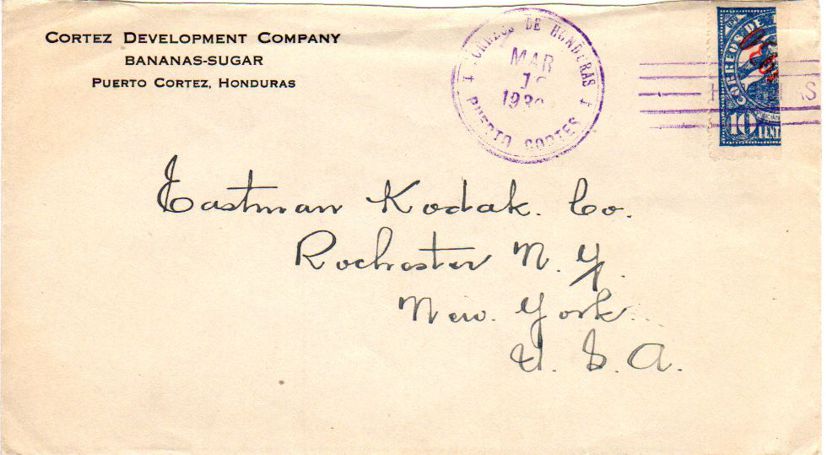 This is a 1930 control mark issue bisected and mailed from Puerto Cortes, March 1930. It bears the newly introduced BH50 cancel along with a CMc postal marking.
This is a 1930 control mark issue bisected and mailed from Puerto Cortes, March 1930. It bears the newly introduced BH50 cancel along with a CMc postal marking.
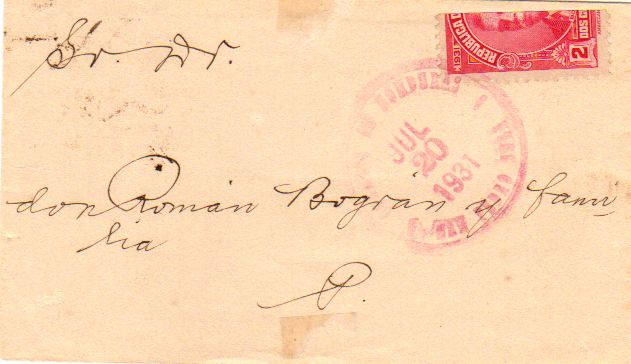 Local usage bisect mailed in July 1931 within San Pedro Sula. The CMc cancel had been in use for eight years.
Local usage bisect mailed in July 1931 within San Pedro Sula. The CMc cancel had been in use for eight years.
-------------------------------------
Anderson collection
Los Sellos Biseados de Honduras by Edgardo Alegría en Honduras Filatelica Dec 1998 pps 595 to 611.
8/24

